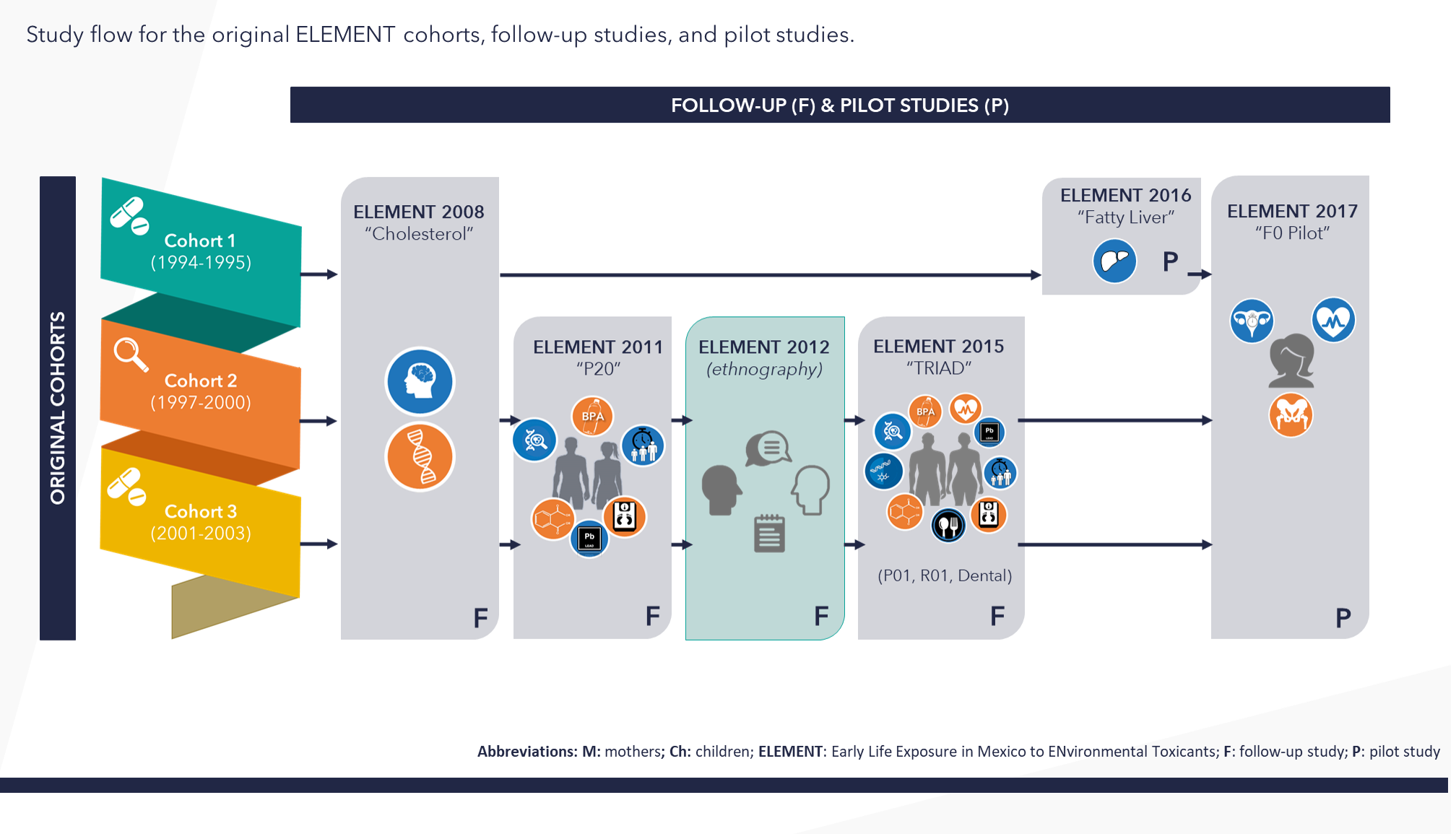Cohort Profile
 The first ELEMENT cohort began with support from the Harvard Superfund Basic Research
Program and individual R01 grants and was an inter-institutional collaboration among
Harvard University, the Center for Population Health Research of the National Institute
of Public Health in Mexico, the American British Cowdray Medical Center and the National
Institute of Perinatology of Mexico. With the movement of multiple ELEMENT investigators
from Harvard University to the University of Michigan between 2006 and 2008, and from
the University of Michigan to the University of Toronto, the ELEMENT cohort became
a collaboration among researchers at University of Michigan, Harvard, the University
of Toronto and partner agencies in Mexico.
The first ELEMENT cohort began with support from the Harvard Superfund Basic Research
Program and individual R01 grants and was an inter-institutional collaboration among
Harvard University, the Center for Population Health Research of the National Institute
of Public Health in Mexico, the American British Cowdray Medical Center and the National
Institute of Perinatology of Mexico. With the movement of multiple ELEMENT investigators
from Harvard University to the University of Michigan between 2006 and 2008, and from
the University of Michigan to the University of Toronto, the ELEMENT cohort became
a collaboration among researchers at University of Michigan, Harvard, the University
of Toronto and partner agencies in Mexico.
The University of Michigan School of Public Health Children's Environmental Health Center (UM-CEHC) project collects and uses data from the existing three ELEMENT birth cohorts. The mother–child pairs of study participants were recruited over a series of years:
Cohort 1, 1994-1997
Cohort 2, 1997-2000
Cohort 3, 2001-2005
Data has been collected at different times including the prenatal period, early- to mid-childhood and adolescence in Cohorts 1, 2, and 3. Currently, 650 ELEMENT participants are being re-recruited for Project 1 and 2 of the CEHC to help us learn how environmental exposures to metals and chemicals during pregnancy and puberty can affect obesity, the rate of sexual maturation, and risk of metabolic syndrome (a combination of increased blood pressure, high blood sugar level, excess body fat around the waist and abnormal cholesterol levels). We are also looking at how what you eat and drink could change these effects.
In addition, we are working closely with anthropologists at the University of Michigan to better understand the context of our findings in the lives of our participants. Dr. Elizabeth Roberts and her team use a bioethnographic approach to study health and inequality in our ELEMENT cohort. Learn more about her MEXPOS study here.
The data collected from the ELEMENT cohorts have provided important information to better understand how people are affected by metals and chemicals. The results of these studies are shared with other scientists in Mexico and elsewhere to improve the safety of women and children. The ELEMENT study team is grateful to the study participants' contributions and dedication to the research which has made advances in science possible. Here is a complete list of publications, presentations and student dissertations that have resulted from the contributions of the ELEMENT study.

